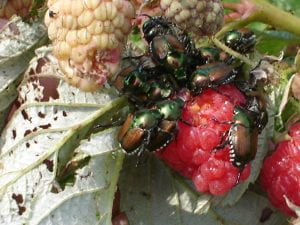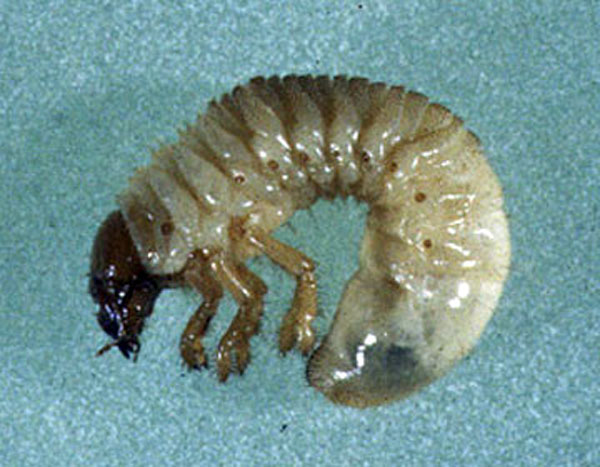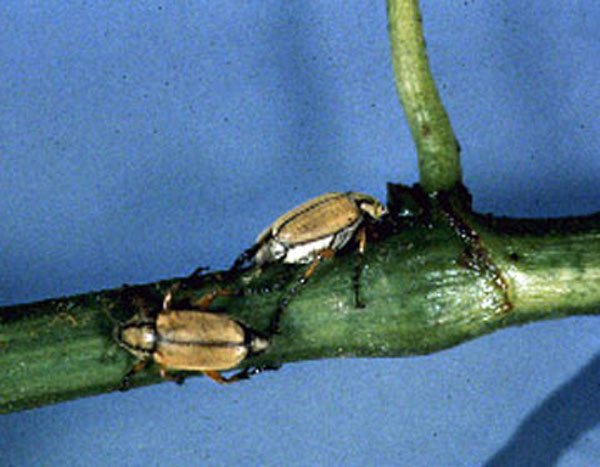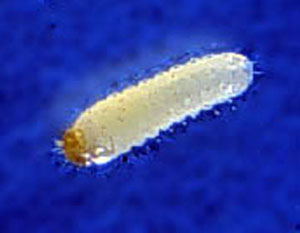Japanese beetles will gladly eat raspberry fruit, but these insect pests cause the most damage to a planting in their larval stage, when they feast on root tissue.

White grubs (larvae) of various insects such as Japanese beetle or Rose Chafer live in the soil for much of the year and will feed on newly planted strawberry, blueberry and raspberry roots, especially following sod or on lighter soils causing gradual decline in plant vigor.
Japanese beetle grub found attacking berry roots. Adult Japanese Beetles also feed on raspberry leaves.

Adult Rose chafers feed on plants, but their larvae feeding on roots causes much more damage.


More information:
- White Grubs (OMAFRA)
- Japanese Beetle Factsheet (University of Maine)
- Japanese Beetle Pest Management in Primocane-Bearing Raspberries (Virginia Tech)
Use these resources if you need additional help with diagnosis and to find solutions to your problem.


